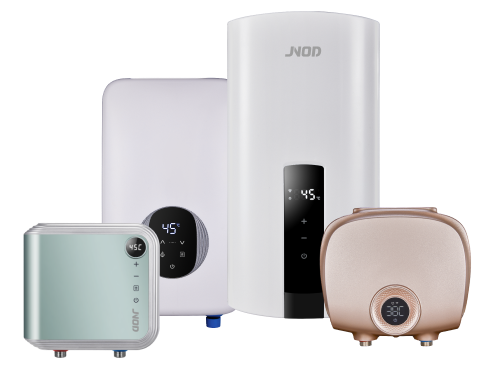In the cozy corners of our homes, the gentle hum of a water heater becomes a background symphony we often overlook. Yet, this ordinary appliance has a significant role. Like an old friend, it offers the luxury of hot water, comforting showers, and dishes cleaned with ease. But have you ever stopped for a moment to consider the importance of optimizing your water heater temperature? Setting the right water heater temperature can strike a balance between comfort, safety, and energy costs.
Recommended Temperature Settings: A Closer Look
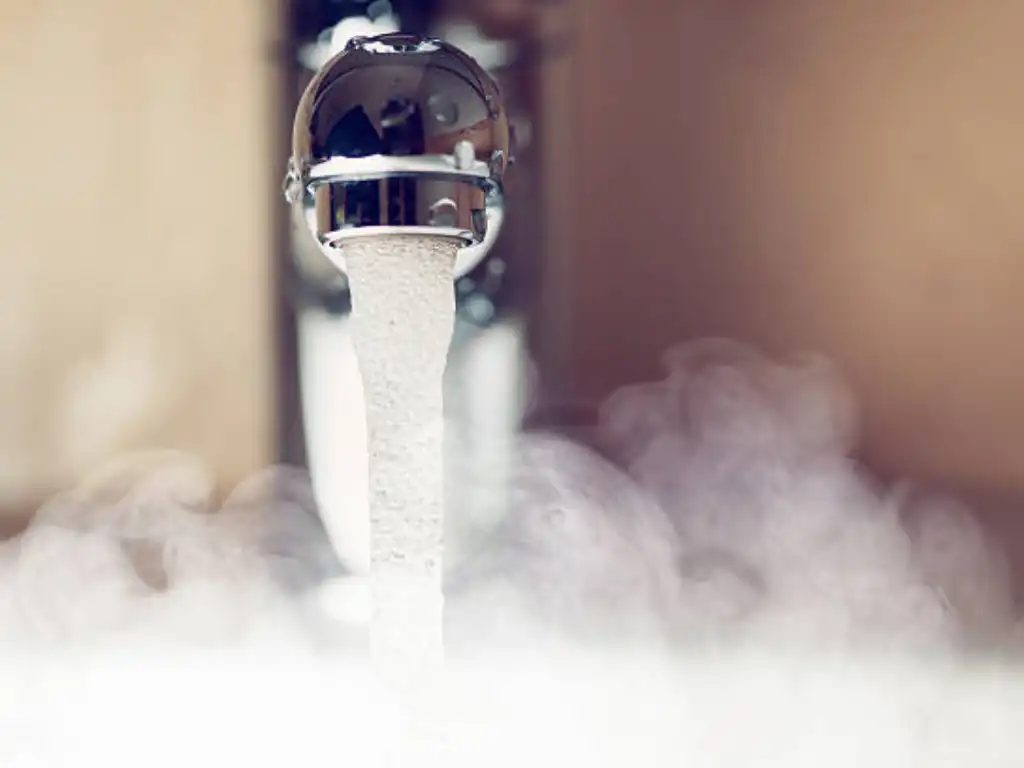
Typically, electric water heaters are preset at 140°F (60°C) – a safety measure against bacteria growth. However, this isn’t always the ideal temperature for every household. The good news is, these systems allow adjustments.
Real-world usage introduces diverse considerations. For instance, households with older adults, especially those with a suppressed immune system, might require higher temperatures to prevent harmful bacteria’s growth. For larger homes, where water has to travel a greater distance through the plumbing, a slightly higher temperature might be necessary to ensure that the water arrives warm at the tap. However, there’s a flip side: risks of scald burns. Therefore, a slight decrease to 120°F (49°C) is advised by various health administrations, significantly reducing burn risks while still being energy-efficient, especially for larger homes but may not provide the comfort of hot water needed in colder climates or specific uses like sanitizing dishes. Thus, it is essential to make a balance between energy use and comfort.
Now, how do we decide the perfect setting? Consider the table below, simplifying temperature settings per need:
| User/Usage Scenario | Recommended Temperature | Reason |
| Families with young children | 120°F (49°C) | Prevent scald burns, safe for skin |
| Older adults | 120-130°F (49-54°C) | Balance between safety & health |
| Cold water usage (laundry, etc.) | Below 120°F (49°C) | Energy-efficient, no need for high heat |
| Large home | 130-140°F (54-60°C) | Maintains warmth despite long travel distances |
The temperature of your water heater doesn’t need to be set in stone. It’s about your household’s composition and activities. Adjustments based on seasonal changes or different household requirements are not only normal but often necessary. For instance, in colder months, a slight increase might be beneficial, whereas in warmer seasons, a reduction can save on energy bills. Remember, the goal is comfort, safety, and efficiency in your water usage.
Bacterial Risks and Water Heater Temperatures
The relationship between the temperature of water and the growth of harmful bacteria is a subject of great importance, especially for those in the field of health and safety. One clear example of such a relationship is the threat posed by Legionella bacteria.
At lower temperatures, especially those below 50°C (122°F), certain harmful bacteria, notably Legionella, find a cozy environment to multiply. This bacteria is the culprit behind Legionnaire’s disease, a severe form of pneumonia that no one wants to encounter. A direct consequence of letting your water heater work at such low temperatures is an increased risk of this disease.
While lower temperatures can invite dangerous bacteria, a well-regulated hot water heater can keep these threats at bay. By setting the water heater thermostat to an ideal temperature, typically between 50°C (122°F) and 60°C (140°F), you can efficiently combat the growth of Legionella and many other harmful bacteria. The heat destroys these invaders, ensuring that our water supply remains safe.
The Dangers of Overheating: Scalding and Burns
Understanding the pros and cons of the water heater temperature is crucial, not just from a health standpoint, but also for occupational safety. It’s important to recognize that while higher temperatures are effective against bacteria like Legionella, they can also pose significant risks, especially in homes with small children or elderly individuals.
High water temperatures, particularly above 60°C (140°F), can cause scalding. It’s a memory I’d rather forget. Once, in my eagerness to ensure bacteria-free water, I mistakenly set the heater to a higher temperature. The water run from the tap was scalding, risking seconds of exposure to severe burns. This fact will become even more alarming when we consider that for delicate skin, typical of small children and elderly homeowners. This isn’t merely a matter of personal preference; it’s a serious safety concern that requires careful attention.
For instance, at 60°C (140°F), it takes about five seconds for an adult to suffer third-degree burns. However, the same level of injury can happen to small children within just two seconds of exposure. This sensitivity dramatically heightens their risk.
So, what’s the best course of action? It’s all about balance. To ensure safety, while still warding off bacteria, experts recommend setting your water heater thermostat to 49°C (120°F). This temperature reduces the risk of scalds while maintaining a level of heat that’s inhospitable to bacteria. It is especially important in the context of occupational safety, maintaining this balance can prevent accidents related to hot water usage. A water temperature that accounts for safety can help avoid unnecessary emergency room visits and ensure a safe living environment, especially in residences with vulnerable individuals.
Controlling the temperature of the water in our heaters is a nuanced task. It’s not just about cranking up the heat to ward off bacteria. It’s about understanding the needs of those in our homes and making informed decisions that prevent harm. By keeping water heater temperatures set within a safe range, we prioritize health without compromising safety.
Energy Consumption and Cost Implications
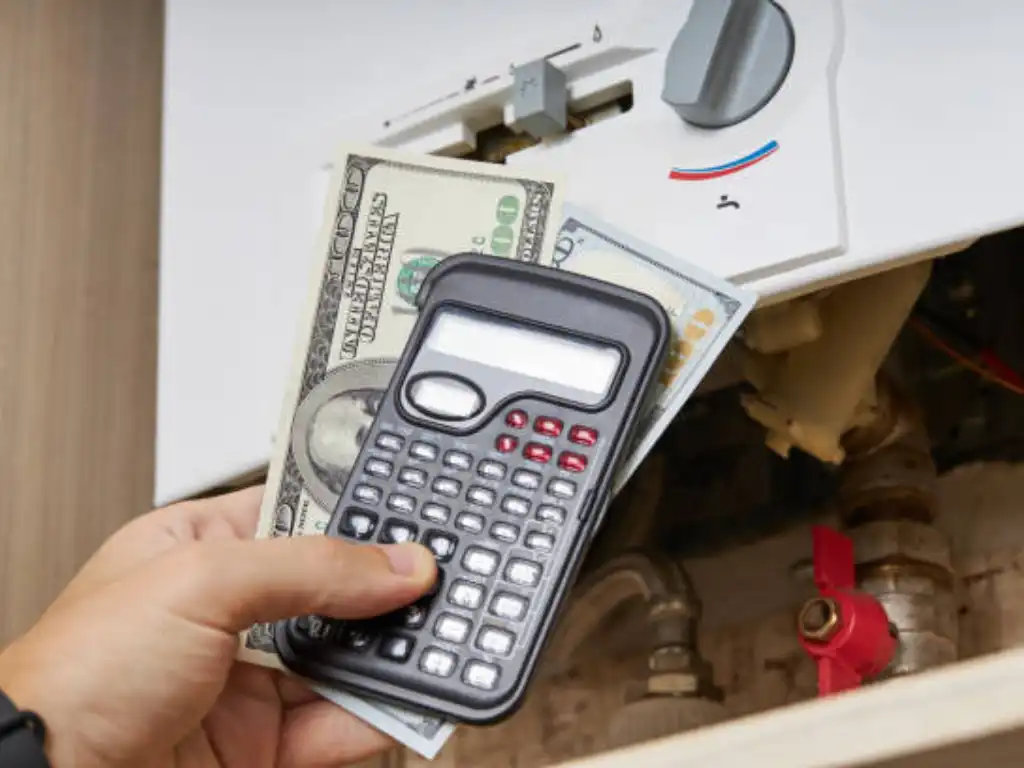
Ensuring optimal water heater temperatures is not just a matter of comfort and safety; it’s also crucial for efficient energy consumption and cost-effectiveness. Following our previous discussion on the risks of overheating, such as scalding and burns, let’s delve into the economic implications of suboptimal temperature settings.
Typically, water heaters account for approximately 15% to 25% of household energy consumption. When you set your water heater to a higher temperature, it works harder and consumes more energy. This leads to an increase in energy waste. A mere 10°F (5.6°C) increase can escalate this by a notable margin. According to the Department of Energy (DOE), reducing your water heater’s temperature by that same amount could save 3-5% on energy costs.
For professionals keen on data, imagine a scenario where your annual energy bill is $1000. Simply adjusting your heater’s temperature could lead to savings between $30 to $50 annually. Over a decade, you’re looking at savings potentially upwards of $500 – and that’s just one simple change.
However, it’s not always a “good idea” to go for the lower setting blindly. A too-low temperature can compromise both comfort and safety. Lukewarm water might not be effective for certain uses and could even be a breeding ground for bacteria. The DOE’s recommended balance is 120°F, a temperature that strikes a harmonious chord between safety, functionality, and efficiency.
But what about standby heat losses? This is where energy seeps away when the hot water tank isn’t in active use. The DOE data suggests that insulating your hot water tank can cut these losses by a staggering 25-45%. In terms of costs, this translates to a 7-16% reduction in water heating expenses. So, if we again consider an annual bill of $1000, insulating could save you up to $160 each year.
Optimal water heater temperatures are a delicate balance between safety, comfort, and efficiency. While pushing the boundaries might seem appealing, the key is to follow trusted recommendations, like those from the Department of Energy, and adopt simple yet impactful measures. Addressing both the setting and mitigating energy waste, such as standby heat losses, can lead to considerable savings, making every drop of hot water count.
Adjusting Temperatures for Different Water Heater Types
As the seasons change, so do our water heating needs. Winter, with its biting cold, often demands hotter water. On the other hand, when summer is coming, the need for scalding hot water diminishes. By adjusting the water heater temperatures, it can reduce energy costs and ensure safety.
Tank-style heaters: Gas and electric
Each water heater, whether gas or electric, has its quirks and characteristics. At home, I often adjust the temperature of the water heater by myself. This process is easier than you might think, whether you’re working with an electric or gas model. My old electric water heater had an access panel where I could easily adjust the temperature. Here is my adjusting process:
a. Safety First: Before you even think about diving in, switch off the power supply. Just like you wouldn’t stick a fork in a toaster, we don’t want any electric surprises.
b. Accessing the Controls: Use a screwdriver to open the access panel. It’s typical to find an insulation pad behind this. Carefully move it aside to reveal the thermostat.
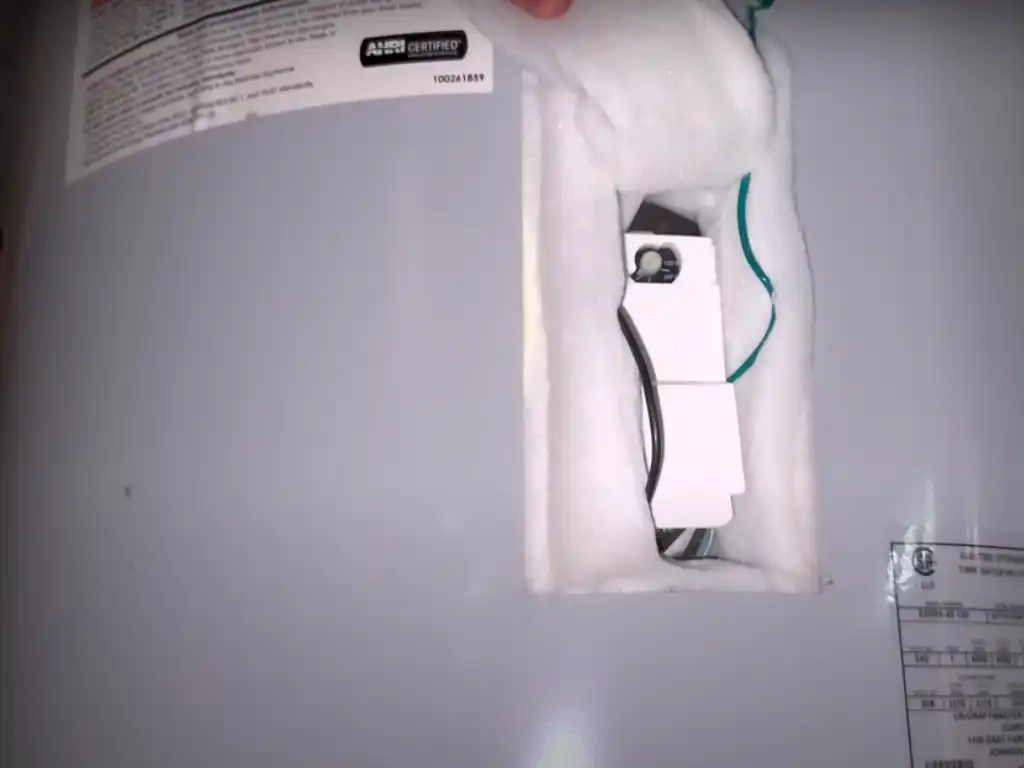
c. Thermostat Navigation: The thermostat will generally be a dial or sometimes a digital interface. You can picture it like adjusting the volume on your old radio or setting your microwave’s timer.
d. Making Adjustments: Turn the dial or use the interface to adjust the temperature. Professionals commonly recommend a range of 120°F (49°C) to 140°F (60°C) for optimal efficiency and safety.
e. Finishing Up: After adjustments, replace the insulation pad and securely close the access panel. Turn on the power. Electric water heaters respond relatively quickly. After about an hour, test your water heater temperature. Too hot or cold? Just adjust and test again if necessary.
Gas water heaters, on the other hand, have a pilot light that needs careful attention.
a. Locating the Dial: The temperature control dial is generally positioned at the base of the unit. Kind of like the volume knob on a speaker.
b. Adjustment: Turn the dial gently to your desired temperature setting. It might have a firmer resistance than expected.
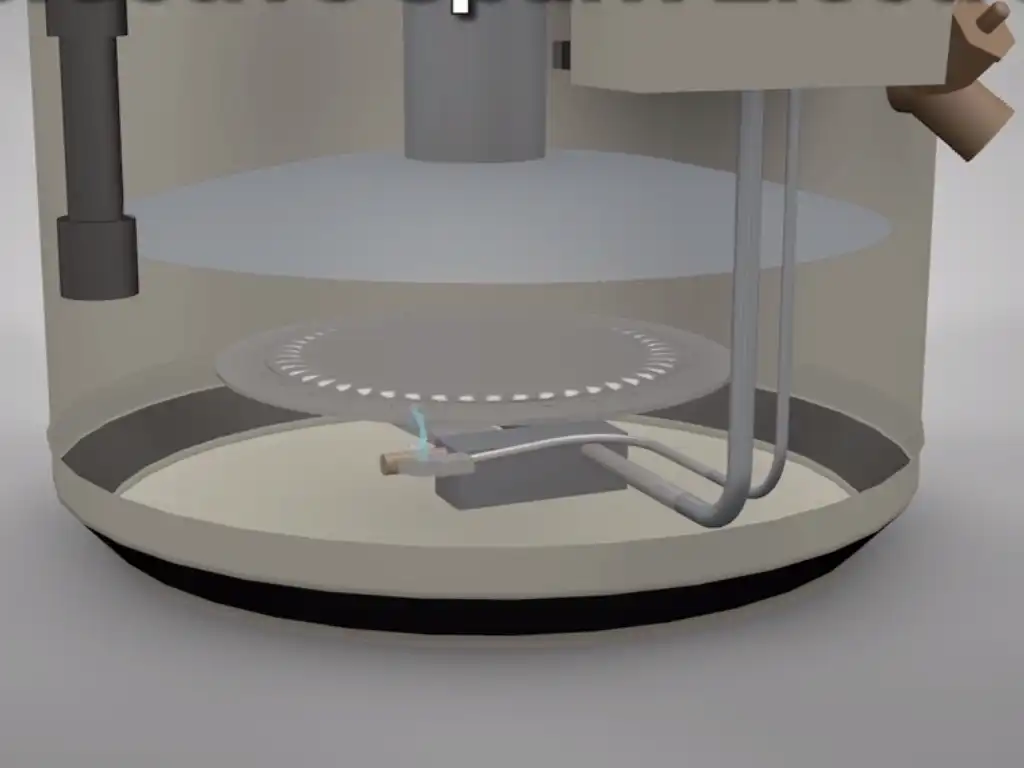
c. Monitoring the Pilot Light: Ensure that the pilot light remains steady and doesn’t flicker or go out during the adjustment. If you notice it acting like a rebellious candle in the wind, refer to the manufacturer’s guide to get it steady again.
Key Note: Patience is key with gas heaters. Unlike electric models, gas heaters might take a longer duration to manifest temperature changes. Wait for about two to three hours before testing the water temperature to ensure accurate readings.
Tankless water heaters: The modern approach
Tankless water heaters (or on demand water heaters) are the evolution in the world of hot water solutions. Unlike the conventional systems with tanks, a tankless water heater heats water directly as you need it, without the need for a storage tank, ensuring a continuous supply. When a hot water tap is turned on, cold water travels through a pipe and into the unit. It’s here that the magic happens: A high-efficiency burner heats the water to your desired temperature. When choosing a tankless water heater, it’s important to consider the tankless water heater size to meet your household’s hot water needs. This on-demand approach also become a favorite at my home.
Most tankless water heaters, whether they are gas or electric water heaters, both have a digital display. This is where you’ll adjust the temperature. Here’s a step-by-step approach:
Turn on the unit.
Look for buttons or dials labeled “Temperature” or “Set”.
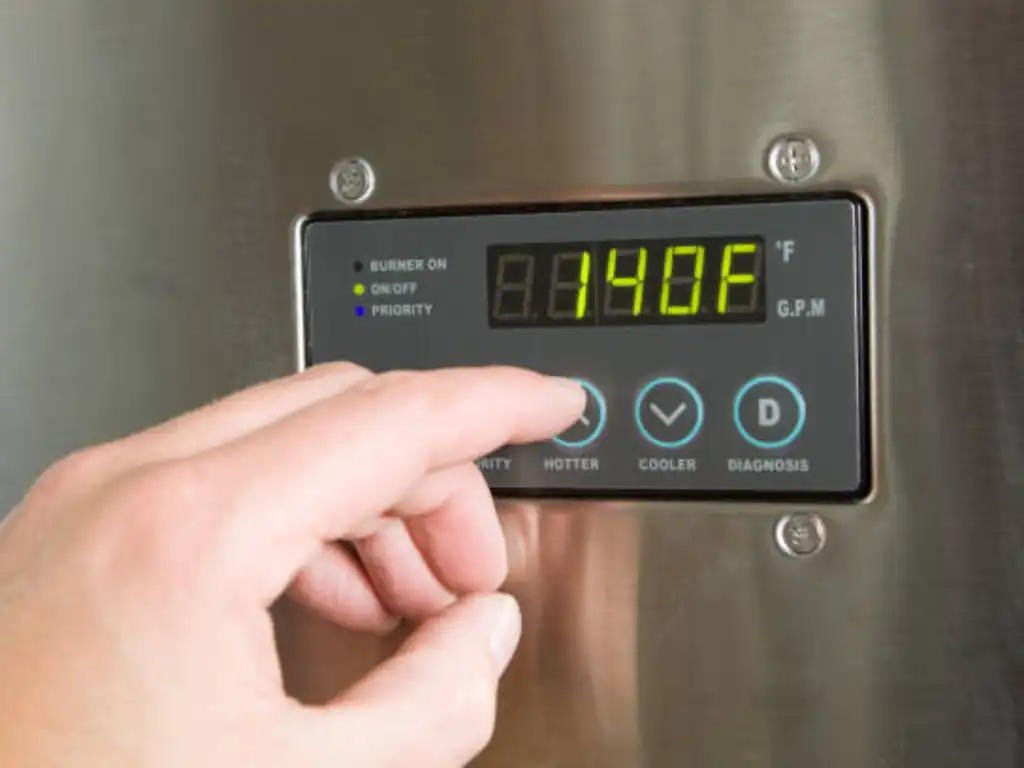
Press or turn these controls to your desired temperature. Commonly, 120°F (49°C) is considered safe for most households, but professionals might need it hotter for specific tasks.
Wait a few moments. Your unit will now heat the water to this new setting whenever you turn on a hot water tap.
One of the major perks of a tankless water heater is the consistent water temperature it provides. So, once you’ve found your perfect setting, you can expect the same temperature every time you turn on the tap.
Adjusting your water heater temperature is straightforward. But always keep safety in mind. For any major changes or concerns, consulting the water heater manufacturer‘s guidelines or seeking professional assistance is always a smart move. Remember, with great technology comes the need for proper understanding and use.
Factors Affecting Water Heater Temperature Performance
Achieving consistent water heater temperature can sometimes be more challenging than simply adjusting the controls. Following our detailed examination of adjusting temperatures for different water heater types, it’s essential to understand why there might be discrepancies between the set and actual temperatures. Let’s unpack some of the primary influencers of water heater performance.
| Mineral Buildup | You know how in some places the water feels kinda “hard”? That’s because of minerals like calcium and magnesium. Over time, these minerals settle at the bottom of your water heater, kinda like a barrier. Think about trying to warm your hands while wearing thick gloves – it’s gonna take longer and need more effort, right? In the same way, these mineral layers can make your heater work up to 15% harder, using more energy but giving you less heat. |
| Thermostat Inaccuracies | You know that dial you use to set your heater’s temp? Well, what if it’s a bit off? There’s this study that found about 1 in 10 water heaters might be off by more than 5 degrees from what the dial says. This can happen because of factory issues, getting old, or just the usual wear and tear. |
| Environmental Considerations | Where your water heater sits in your home really matters. Like, if it’s in a cold basement, it’s gonna have a tough time keeping the water warm when it gets really cold outside. It ends up eating more energy but still doesn’t get the water as hot as you’d like. |
| System Age and Maintenance | As water heaters get older, they start showing signs of wear and tear, which can mess with the water temperature staying steady. Keeping up with regular upkeep, like clearing out any build-up of minerals and making sure the thermostat is on point, is not just good for the heater’s life. It also keeps the water temperature just right. |
While setting the temperature is a start, a myriad of factors can affect your water heater’s actual performance. Knowledge of these influences allows professionals and homeowners alike to make informed decisions and take proactive measures. After all, optimizing a water heater isn’t just about setting the right temperature, but ensuring it maintains that temperature consistently.
Practical Steps to Measure and Adjust Water Temperature
Water heaters are a fundamental appliance in modern homes and businesses. It’s essential to measure the current temperature accurately to ensure safe and comfortable usage, especially when there are individuals in your household who are sensitive to temperature.
First, you should understand the current temperature. This is your baseline. Using a reliable kitchen thermometer, let the water flow for about three minutes. Why three minutes? Most water heaters take this time to give a consistent flow of its stored temperature. After this, fill a cup and place your thermometer inside. Record the temperature. Comparing this reading with the set temperature on the water heater can immediately indicate any discrepancy.
Before you even think of adjusting the water heater settings, always think safety first! The circuit breaker connected to your water heater should be turned off. This is non-negotiable. A powered water heater during adjustments can lead to electrical mishaps. Remember, safety is paramount, especially when younger children are in the household.
After making the necessary adjustments, don’t expect immediate results. Water heaters are not instant devices. It can take several hours to stabilize. Why wait? This allows the unit to reach its new target temperature and ensure consistent performance. After waiting, it’s time to measure again. Use the same process as before. If the temperature now aligns with your target temperature, you’re on track. If not, further adjustments might be necessary.
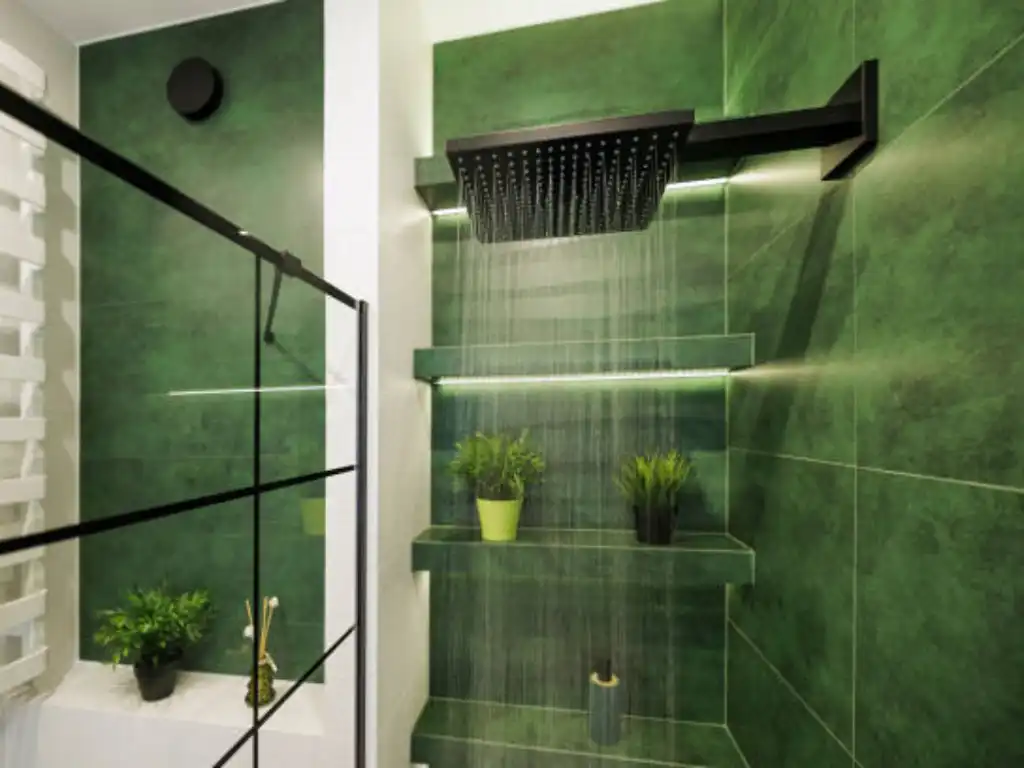
Longevity and Maintenance of Water Heaters
Over the years, I’ve come to realize that just like us, our appliances have their own rhythm and pace. Besides the accuracy of the water heater’s temperature display, the lifespan of the heater is also of significant importance. No one wishes to frequently undertake water heater repairs or replacements. Consistently setting your water heater to extremely high temperatures can strain the system, potentially shortening its lifespan. Why? High heat can speed up the corrosion of internal parts. Plus, it’s more energy-consuming – and that means higher bills. On the other hand, temperatures that are too low might not effectively combat bacterial growth, leading to other issues. It’s all about finding that harmonious middle ground.
So, what’s the balance? Aim for about 120 to 125 degrees Fahrenheit. This middle way helps your system last longer and saves energy without giving bacteria a cozy home. Regular check-ups are important, too. Imagine missing a little rust spot that could grow! A yearly look at your water heater, especially the tank’s inside and the pilot light for gas types, can catch issues early.
Remember the link with our health and safety? It’s about peace of mind, too. Making sure your water heater isn’t forgotten means less worry about unexpected cold showers or, worse, leaks and damage.
Adjusting your water heater temperature is a straightforward task, but it is crucial for the longevity of the appliance and your wallet. A well-maintained water heater ensures a balance between safety and cost-efficiency, offering comfort without burning a hole in your pocket.
Conclusion
In conclusion, optimizing your water heater temperature is not just about enhancing the comfort of your home—it’s a strategic decision that impacts energy consumption and household safety. By really thinking about what your family needs and making some smart tweaks, you can nail that sweet spot where you save on energy, avoid any scalding surprises, and always have hot water when you need it.
And hey, don’t forget, the perfect temp might change with the seasons or depending on what’s going on at home. Regular maintenance and periodic reviews of your water heater settings are essential to ensure ongoing performance and safety. Armed with the knowledge from this guide, you can make thoughtful adjustments that bring comfort, safety, and efficiency to your home.
If you are struggling with a reliable water heater, Jnod water heater, a modern marvel in the world of water heating, is your go-to choice. With its advanced features and user-friendly interface, it promises to deliver the ideal temperature for both health and comfort. Contact Jnod and see how the latest tech can make life a breeze, ensuring you’ve always got that perfect hot water on tap.
